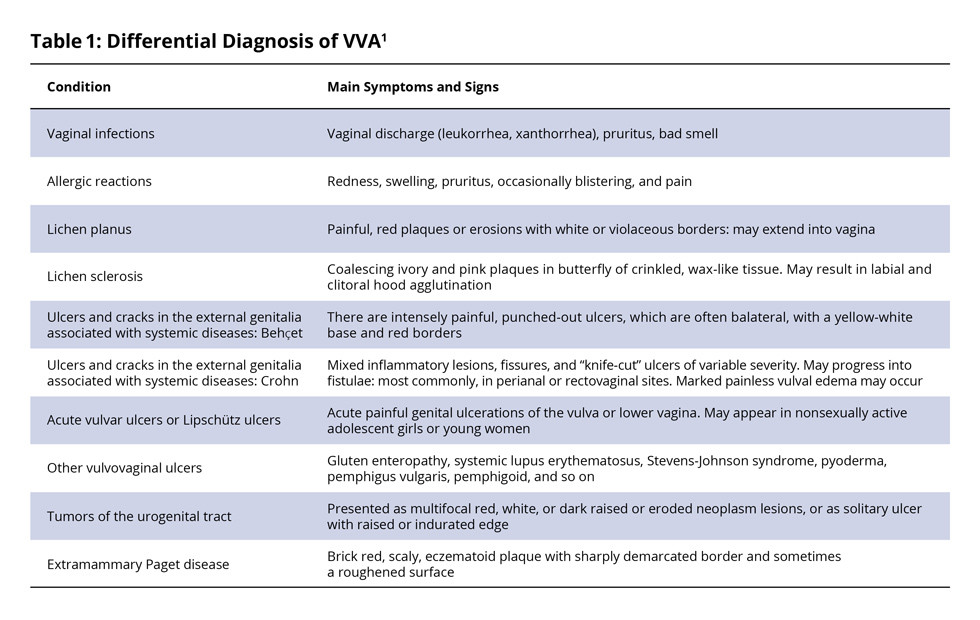The diagnosis of VVA1 is made difficult by the low awareness of women about the pathological manifestations of the postmenopausal period and unwillingness/embarrassment to discuss the symptoms of an intimate character with the expert. In their study, Nappi and Kokot-Kierepa noted that only 4% of respondents associated their symptoms with the manifestations of menopause. Unfortunately, 75% of patients with the clinical manifestations of VVA do not seek help from specialists.2
A differential diagnosis should consider the conditions summarised in Table 1.

1. Naumova, I. and Castelo-Branco, C. 2018 ‘Current treatment options for postmenopausal vaginal atrophy’, International Journal of Women’s Health. Volume 10, 387-395.
2. Nappi, R.E. and Kokot-Kierepa, M. Vaginal Health: Insights, Views & Attitudes (VIVA)—Results from an International Survey. Climacteric. 2012; 15: 36-44.

